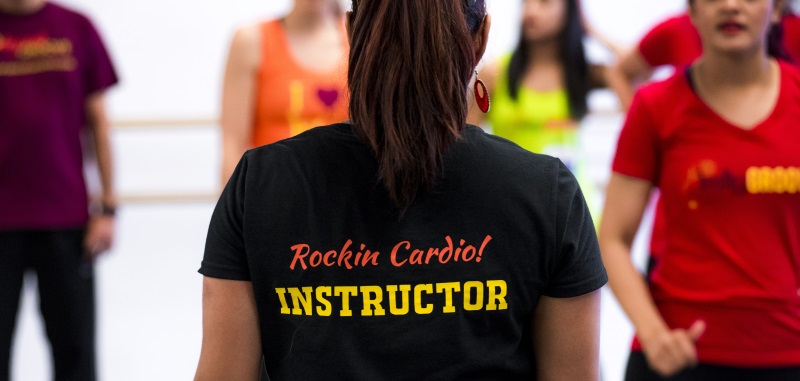Culture Groove – a multicultural educational resource for kids
Check out the brand new launch of Culture Groove – a multicultural educational resource for kids.
Culture Groove has been launched with two objectives in mind:
Raise Multicultural Kids
Connect Kids to their Roots – for kids of Indian origin
Culture Groove Offers
Bestselling Books – Bestselling Books with Maya, Neel & Chintu. Extremely Engaging content for kids ages 3 to 8 years about Indian festivals, cities & more.
Free YouTube Channel – Educational & Cultural Screen time! Learn about the beautiful cultures via fun animations and videos that teach about language, food, festivals and more.
Join the bG Team!

Join the BollyGroove Team!
We provide free training and content and pride on a fantastic team of bright, enthusiastic and professional individuals!
Make some $$$ and develop amazing professional and life skills!
Please check back for open positions.

South Asians, Type 2 Diabetes, and Nutrient Intake – New Study Finds Interesting Results
By Rachelle Mallik, MA, RD, LDN, Registered Dietitian and Owner of The Food Therapist, LLC
 A recent study looking at dietary intake among South Asians in the US found that those with type 2 diabetes consumed less calories, but also lower amounts of nutrients than South Asians without type 2 diabetes. According to the study authors, many of these nutrients are associated with a reduced risk of developing type 2 diabetes. Some of the nutrients where study participants with type 2 diabetes fell short included fiber, calcium, magnesium, zinc, potassium, vitamin E and beta-carotene (the precursor to vitamin A).
A recent study looking at dietary intake among South Asians in the US found that those with type 2 diabetes consumed less calories, but also lower amounts of nutrients than South Asians without type 2 diabetes. According to the study authors, many of these nutrients are associated with a reduced risk of developing type 2 diabetes. Some of the nutrients where study participants with type 2 diabetes fell short included fiber, calcium, magnesium, zinc, potassium, vitamin E and beta-carotene (the precursor to vitamin A).
While this was a small and very short-term study, it’s important to remember that nutrition is more than just calories and the quality of the food you eat matters. A diet rich in nutrient-dense foods, like vegetables, fruit, whole grains, legumes, nuts and seeds, provides energy (calories) as well as vitamins, minerals, and antioxidants that are associated with improved health outcomes. Considering that South Asians are five times more likely to develop diabetes before age 40, it’s important to remember that your diet is something you can change to reduce your risk.
Here are some foods to include in your diet that provide key nutrients from the study:
Calcium: milk, yogurt, fortified non-dairy milks, tofu, broccoli, almonds, sesame seeds/tahini
Magnesium: nuts (almonds, cashews), spinach, legumes (lentils, kidney beans, soybeans)
Zinc: shellfish (crab, lobster), chicken thighs, cashews, chickpeas, yogurt
Potassium: lentils, bananas, avocados, potatoes
Vitamin E: sunflower seeds, almonds, peanut butter, cooked spinach
Vitamin A (beta-carotene): dark leafy greens (spinach, mustard greens), orange-hued vegetables (butternut squash, pumpkin, sweet potato), cantaloupe
For good sources of dietary fiber, check out this earlier article. Bonus – these foods can also help lower cholesterol!
If you are interested in making dietary changes to reduce your risk of diabetes, heart disease, or you just want to eat well and be healthier, email me at rachelle@rachellemallik.com. I offer complimentary intro sessions to talk about your health goals and see if we’re a good fit for working together.
Rachelle LaCroix Mallik, MA, RD, LDN is a Registered Dietitian and owner of The Food Therapist, LLC, a private nutrition counseling practice based in Chicago. Rachelle specializes in reproductive nutrition for fertility, prenatal, and postnatal wellness. She earned a Bachelor’s with Honors in Human Nutrition at Arizona State University and a Master’s in Food Studies – Food Culture at New York University. Rachelle is a member of the American Society for Reproductive Medicine, the Academy of Nutrition and Dietetics, the Women’s Health Dietetic Practice Group, and she serves on the board of the Academy’s Chicago chapter.
Rachelle lives in Lakeview with her husband Ronak, baby boy Arjuna, and adopted pup Lola. She’s also a Bolly Groover – it’s her favorite form of cardio!
Visit her at rachellemallik.com or follow her on Twitter, Facebook, and Instagram at @rachellemallik.
Five Foods to Lower Cholesterol
By Rachelle LaCroix Mallik, MA, RD, LDN, Registered Dietitian and Owner of The Food Therapist, LLC
Elevated total and LDL cholesterol are correlated with increased risk of cardiovascular disease. While high cholesterol can be genetic, what you eat can have a significant impact on your cholesterol levels.
What do these five foods have in common? Fiber! Specifically, these foods provide soluble fiber, which creates a gel in your digestive tract and binds to cholesterol to help remove it from your body before it gets into your bloodstream. Soluble fiber may also reduce LDL (“bad”) cholesterol through the production of short-chain fatty acids (SCFAs), which feed good bacteria in the gut.
 Oats
Oats
Oats are one of the richest grain sources of soluble fiber. Start your morning with a cup of oatmeal porridge, muesli, or overnight oats to get 2 grams of this cholesterol-lowering fiber.
 Beans
Beans
While all beans are good sources of soluble fiber, kidney beans are one of the best with 4 grams per cup. Enjoy a comforting bowl of rajma served over brown Basmati rice.
 Okra
Okra
Okra is non-starchy (ie low carbohydrate) vegetable that’s popular in Southern cooking as well as Indian cuisine. It’s also a good source of soluble fiber. Instead of using a lot of oil to make fried bhindi, make a “wet” sabji for a lower-calorie, low-fat vegetarian dish.
 Eggplant
Eggplant
Eggplant is another low-calorie vegetable that’s a good source of soluble fiber. Baingan bharta has a delicious, smoky flavor and uses less oil compared to deep frying for pakoras or dishes like eggplant parmesan.
 Apples
Apples
A common fruit used for prasad at Hindu temples in the US, apples are rich in the soluble fiber pectin to help lower cholesterol.
Questions about your diet and heart health? Send me an email at rachelle@rachellemallik.com.
Rachelle LaCroix Mallik, MA, RD, LDN is a Registered Dietitian and owner of The Food Therapist, LLC, a private nutrition counseling practice based in Chicago. Rachelle specializes in reproductive nutrition for fertility, prenatal, and postnatal wellness. She earned a Bachelor’s with Honors in Human Nutrition at Arizona State University and a Master’s in Food Studies – Food Culture at New York University. Rachelle is a member of the American Society for Reproductive Medicine, the Academy of Nutrition and Dietetics, the Women’s Health Dietetic Practice Group, and she serves on the board of the Academy’s Chicago chapter.
Rachelle lives in Lakeview with her husband Ronak, baby boy Arjuna, and adopted pup Lola. She’s also a Bolly Groover – it’s her favorite form of cardio!
Visit her at rachellemallik.com or follow her on Twitter, Facebook, and Instagram at @rachellemallik.









